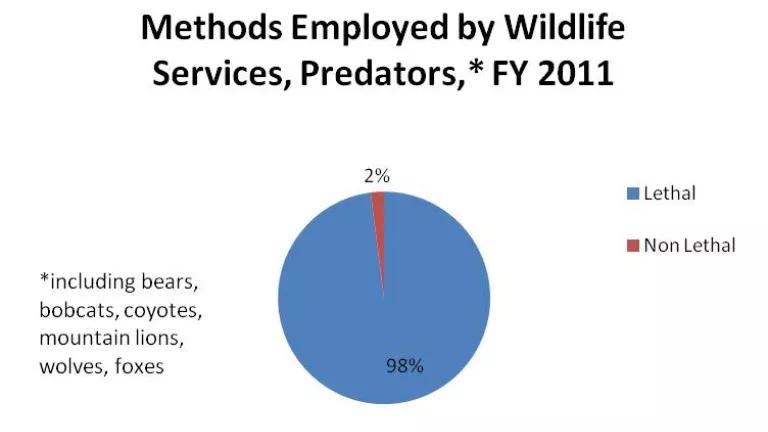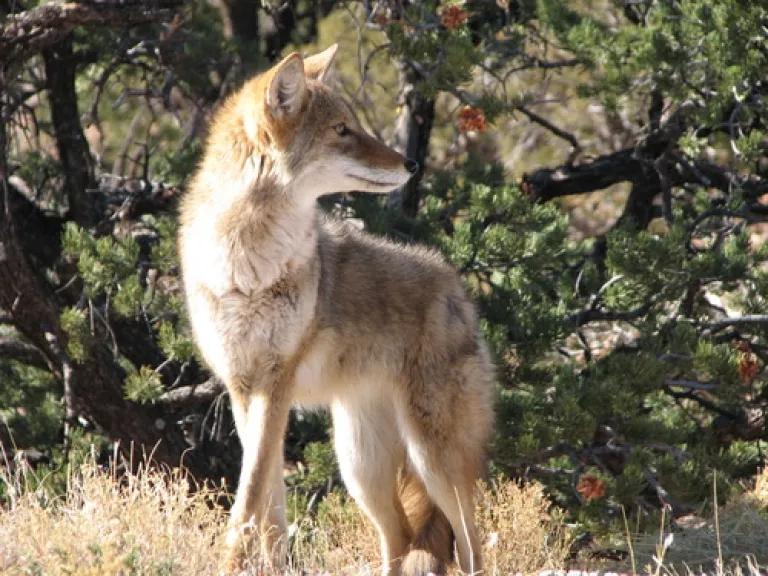
In case you missed it, this weekend NPR News featured a story about Wildlife Services, the federal program that kills 100,000 native predators each year, and the ongoing federal investigation into its activities. In the piece, several claims are attributed to Kevin Shea, USDA’s Wildlife Service’s Administrator, which are, at best, misleading. Among them:
- Wildlife Services “collects fees from ranchers to pay for its work;”
- “Lethal methods are used sparingly and as a last resort;” and
- “Wildlife Services is working to become more transparent. He says every lethal encounter is now posted on its website.”
Let’s take these one-by-one, shall we?
First, while it true that Wildlife Services collects fees from ranchers to help pay for its work, what Shea doesn’t seem to point out is that the federal taxpayer still foots the bill for about half of all of Wildlife Services’ costs. That adds up to $87milliion dollars a year in taxpayer dollars, money which goes to activities such as paying over $800 per hour to shoot wolves from helicopters and airplanes (a doubly-ironic expenditure of funds, given that taxpayers also footed the bill to reintroduced wolves in the West and some of the killing even goes on in federal wilderness—far away from any ranch). More perniciously using taxpayer funds to subsidize predator control creates a vicious circle all around: local governments and private ranchers have little incentive to try nonlethal methods of predator control when they can buy federal lethal control at a fifty-percent discount; as for Wildlife Services’, its budget and staffing quickly becomes captive to securing its clients’ fees.
Second, when it comes to its predator control program, Wildlife Services simply does not use lethal methods “sparingly.” As my colleague Melissa Waage points out, 98% of Wildlife Services’ interactions predators such as bears, foxes, wolves, mountain lions, and bobcats, end with a dead predator. Indeed, Wildlife Services kills an astonishing 227 coyotes every day, that’s over 1 million coyotes dead since 2000 (all of which may be counter-productive, as there is evidence that killing coyotes actually spurs overall population growth).
Third, while it is true that Wildlife Services reports the number of animals it kills (that’s how we calculated the chart you see here) the agency refuses to disclose much more than that, even to Congress. As the NPR story makes clear, Wildlife Services will not provide any detailed information on how much money it spends, say, putting explosive poison bait on public land, or where that bait is scattered. It won’t tell us the location of the animals it kills with any sort of detail, nor does it usually disclose why individual animals are killed. Representative Peter DeFazio summed it up best:
"It is probably one of the most opaque, unaccountable agencies in the federal government," DeFazio says. "I've served on Homeland Security for a number of years, and I can safely say that the doings of Wildlife Services are much more obscure."
So it should come as no big surprise that the USDA’s Inspector General is now auditing Wildlife Services. An investigation is long overdue. Ask the Secretary of Agriculture to fully support this investigation here.


